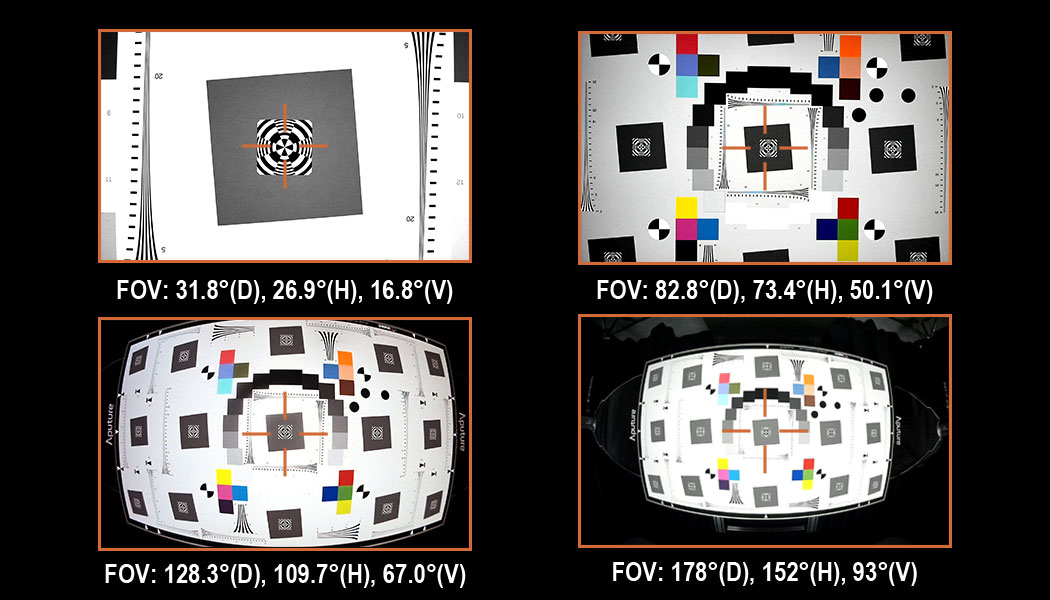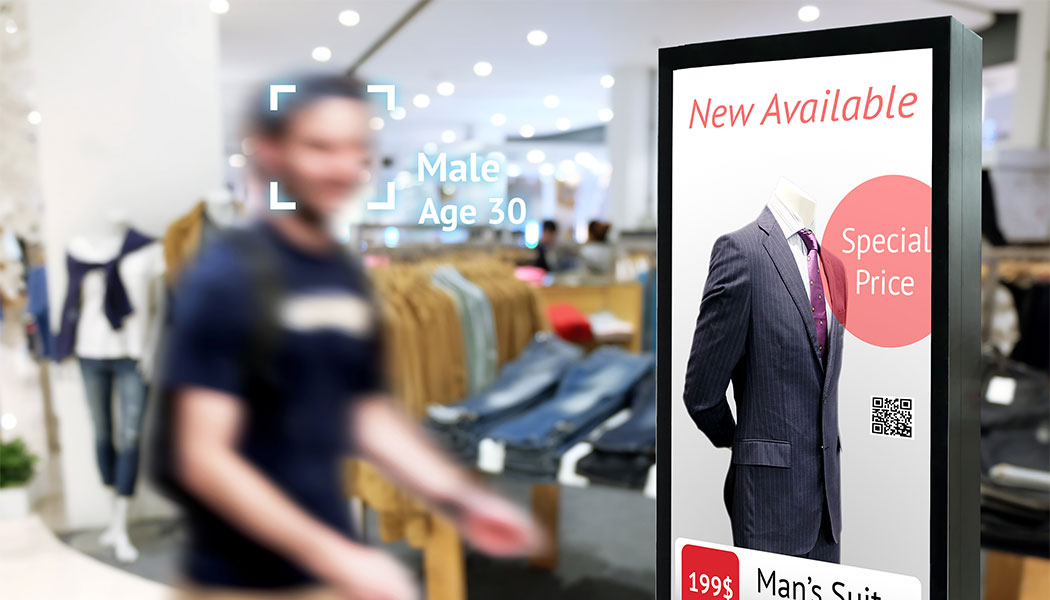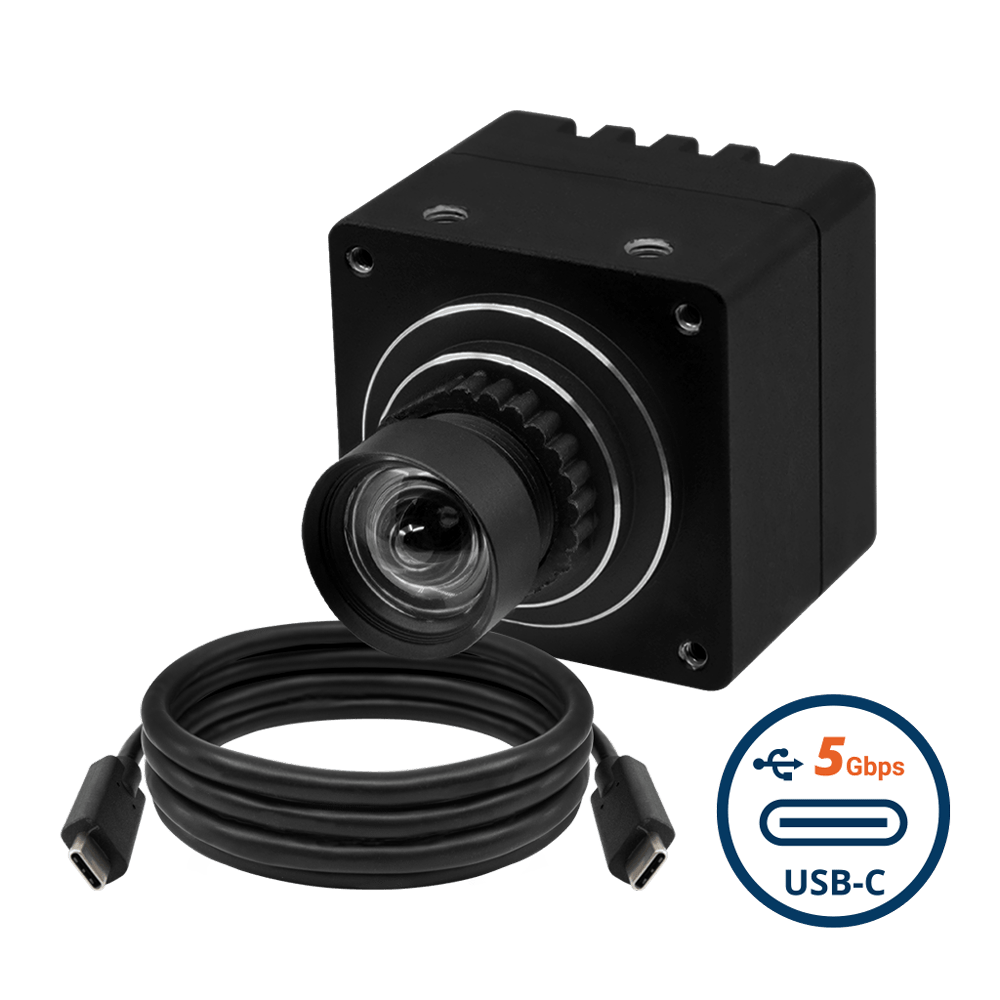With the world getting smarter and smarter, cameras have become essential tools in a wide range of applications, from personal use to professional settings. With so many options on the market, wide-angle USB cameras have emerged as a popular choice for certain embedded vision applications. This article takes a deep dive into wide-angle USB cameras, covering everything from their definition and practicality in embedded vision to the different types of lenses available for capturing expansive fields of view.
What is a wide-angle USB camera?
A wide-angle USB camera comes with a large field of view (FOV), making it possible to capture images of large areas. The ability to connect to devices via a USB port allows easy access and use in various situations. The wide-angle lens is especially useful for capturing larger subjects or when space is limited, ensuring that nothing is left out of the frame.
In addition to having a lens with a wide field of view, the sensor should also have the ability to cover that FOV. For optimal utilization, a lens with an image circle diameter that matches the dimensions of the sensor is chosen. Since the sensor is the most important component of an imaging system, it is usually selected first. This is why the lens has to be compatible with the sensor chosen.
Why are wide-angle USB cameras relevant in embedded vision?
Embedded vision is the integration of vision capabilities into embedded systems, such as industrial machines and robots. These systems often have to capture a wide area with a single camera or a limited number of cameras.
For example, consider a patrol robot that does 24×7 monitoring and surveillance of a secured space. It needs to have a surround-view imaging system to achieve 360-degree imaging. While this can be done with the combination of low field of view cameras, having a wide field of view helps to reduce the number of cameras required, which in turn reduces the overall cost of the system.
In addition, many embedded vision systems like biometric devices and digital signages need to capture a wide frame at short distances. This necessitates a camera with a wide field of view. Further, compatibility with the USB interface makes integration easy in a wide variety of applications where an x86-based system is used as the host.


Types of wide-angle lenses
To make the most out of wide-angle cameras, it’s crucial to understand the different types of wide-angle lenses and their applications to choose the best one for your specific needs and improve your overall visual capabilities and performance.
Wide-angle lenses can be categorized based on their field of view, and they generally fall into three main types:
Ultra wide-angle
Ultra wide-angle or extremely wide-angle lenses are perfect for capturing panoramic landscapes and architectural structures. With a field of view exceeding 90 degrees, and in some cases up to 180 degrees, these lenses allow for stunning wide shots that can encompass vast scenes. Whether shooting nature or cityscapes, an ultra-wide-angle lens can help you capture it all in one frame. Owing to the high field of view, they are perfectly suitable for 3D photogrammetric applications – provided it is integrated with a 3D sensor.
Also read: 3D Photogrammetry in Commercial Applications Using RGBD Cameras
Wide-angle
With a field of view ranging from 64 to 84 degrees, wide-angle lenses are used in a vast array of industrial and commercial imaging systems. Whether you’re capturing items on a moving conveyor belt, helping a robotic arm with picking and placing, or shooting in confined spaces, these lenses have got you covered. They allow you to capture more of your surroundings and bring a unique perspective to your images and videos.
Standard wide-angle
Standard wide-angle lenses have a field of view between 64 and 50 degrees. These lenses capture scenes with more context and less distortion than ultra-wide-angle lenses. They are great for applications where even the slightest of distortions can affect the performance of the vision system.
Disadvantages of wide-angle cameras
While wide-angle cameras offer numerous benefits, they also have some drawbacks that users should consider:
Distortion
Wide-angle lenses are often criticized for causing distortion in images, particularly at the edges. This type of distortion, known as barrel distortion, can make straight lines appear curved and can be problematic in fields like architectural photography, where accuracy is crucial. It can also make objects near the edges of the photo look stretched or distorted.
Limited zoom capability
While wide-angle cameras are great for capturing expansive landscapes and group shots, their short focal length can be a disadvantage when the subject is far away. This limitation can make it difficult to capture clear and detailed images in wildlife photography, sports photography, or other scenarios where getting close to the subject is not possible.
Overemphasis of foreground
While the wide field of view of these lenses can capture a larger area, it can also cause objects in the foreground to appear larger and those in the background to appear smaller. This may result in an unbalanced composition, and important details in the background may be overlooked.
Reduced bokeh effect
While wide-angle lenses are great for capturing stunning landscapes, they may not be the best choice for portrait photography. This is because their deep depth of field makes it challenging to achieve a blurred background, which is often desired to make the subject stand out.
Challenges in low-light conditions
While wide-angle lenses are great for capturing a broader field of view, they often have smaller apertures, making them less effective in low-light conditions. This may not be ideal for indoor imaging, night photography, or any situation with limited lighting.
Are wide-angle cameras used only with the USB interface?
While wide-angle USB cameras are a popular choice among product developers, it’s not necessary that they have to be paired with a USB host. Wide-angle cameras can very well be integrated with ARM processors like the NVIDIA Jetson, NXP i.MX8, or TI Jacinto TDA4VM. The primary advantages of using a USB interface are:
- Compatibility with a wide range of host systems, including ordinary and industrial PCs.
- A maximum theoretical bandwidth of 5 Gbps.
- There is no need for a specialized driver to process and view the image data.
- Many applications needing a wide-angle camera use x86-based hosts.
Mostly, the choice of the interface is determined by the host system, the bandwidth requirements of the application, and the distance of transmission. If USB cannot meet these for your embedded vision device, consider going with an ARM-based platform and interface.
Also read: UVC USB Camera Modules – Why They are Preferred in Most Embedded Camera Systems
Applications of wide-angle USB cameras
Smart traffic and parking lot management
Wide-angle USB cameras help manage traffic and parking lots. With their comprehensive view, they enable monitoring of multiple lanes of traffic and large parking areas, leading to optimized traffic flow, reduced congestion, and efficient use of parking spaces. These cameras are invaluable for keeping our roads and parking areas safe and organized.


Surveillance and monitoring
Wide field-of-view cameras are commonly used in security applications for their ability to cover large areas with a single camera. This reduces the number of cameras needed for monitoring and helps lower costs. You can find these cameras in public spaces, retail stores, and buildings where constant surveillance is necessary.
Sports analytics and broadcasting
Wide-angle cameras are an essential tool in sports for capturing the entire field or court. They provide a comprehensive view crucial for analytics and broadcasting, allowing in-depth analysis of players’ movements and strategies. Additionally, they greatly enhance the viewing experience for audiences by providing a fuller view of the game.
Also read: Embedded Vision in Sports Analytics – Relevance and Applications.
Biometric systems
Biometric systems use wide-angle cameras to capture individuals clearly and accurately. These cameras are designed to ensure accurate capturing even if the person is not directly facing the camera, resulting in improved accuracy and reliability for the system.
Digital signage and kiosks
Interactive advertising and information kiosks can be more engaging with cameras that detect when people are nearby and respond accordingly. This technology enables a more interactive user experience, making it easier for people to access information and learn about products or services. A wide field of view camera is good to have in an application like this

Telepresence & tele-existence robots
Wide-angle USB cameras are an essential tool in enhancing the capabilities of telepresence and teleexistence robots. By providing users with a broad view of the remote environment, these cameras make interactions more immersive and engaging. Users can fully immerse themselves in the remote experience with clearer visuals and wider perspectives.
Digital microscopes
In microscopy, capturing a larger area of the specimen can provide valuable context and information, enhancing analysis and research capabilities. This gives a more comprehensive understanding of the subject and leads to more accurate conclusions.
Ophthalmology devices
Wide-angle cameras are essential components in devices like retina scanners. They enable a comprehensive eye examination and play a vital role in early disease detection. With their ability to capture a wider field of view, these cameras provide more detailed images for accurate diagnosis and treatment planning.
TechNexion – wide-angle cameras for any embedded vision application
TechNexion provides a comprehensive selection of cameras compatible with wide-angle lenses, making them ideal for various embedded vision applications. We have sensors that are compatible with wide-angle lenses that facilitate the full utilization of a wide-angle lens’s complete field of view.
The AR0234 sensor family offers different angle FOV camera options, namely the narrow, standard, wide, and ultra-wide FOVs.
TechNexion offers a range of USB cameras that cater to diverse applications and address the potential disadvantages of using wide-angle lenses. With this, users can make informed decisions when selecting the right camera and lens combination for their specific embedded vision needs. Learn more about our embedded vision solutions here.
Related Products
- What is a wide-angle USB camera?
- Why are wide-angle USB cameras relevant in embedded vision?
- Types of wide-angle lenses
- Disadvantages of wide-angle cameras
- Are wide-angle cameras used only with the USB interface?
- Applications of wide-angle USB cameras
- TechNexion â wide-angle cameras for any embedded vision application
- Related Products



